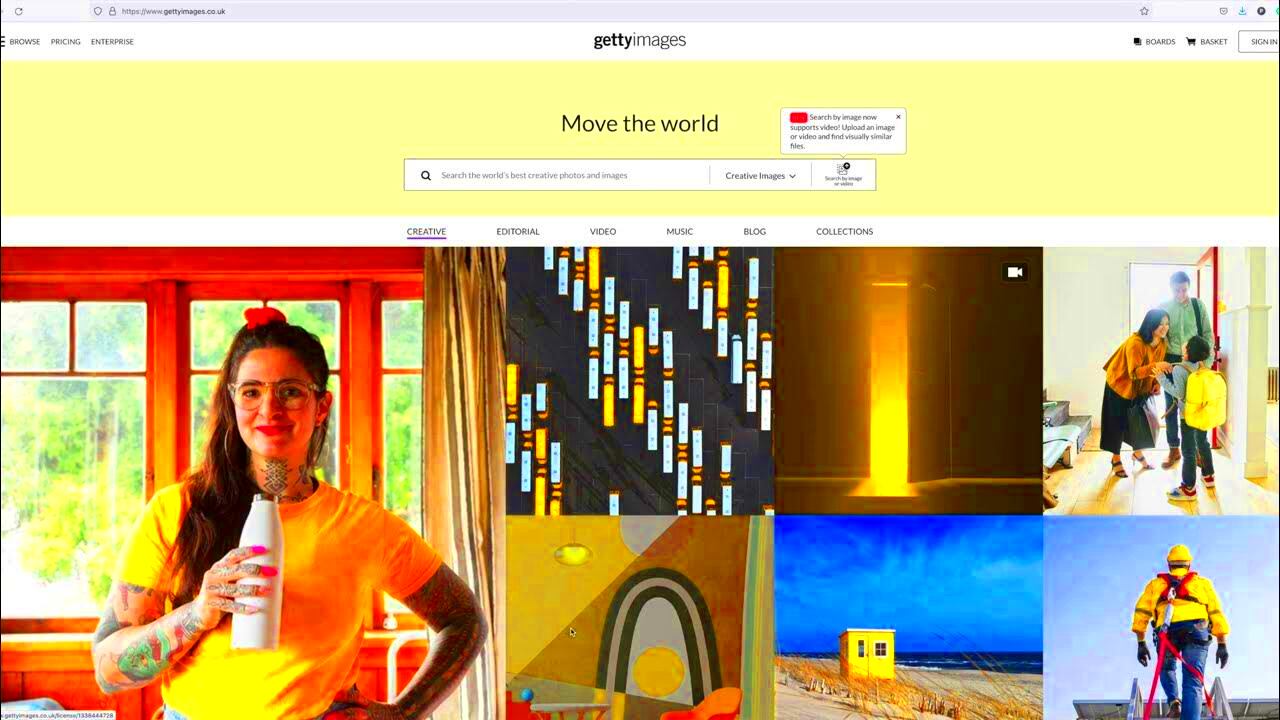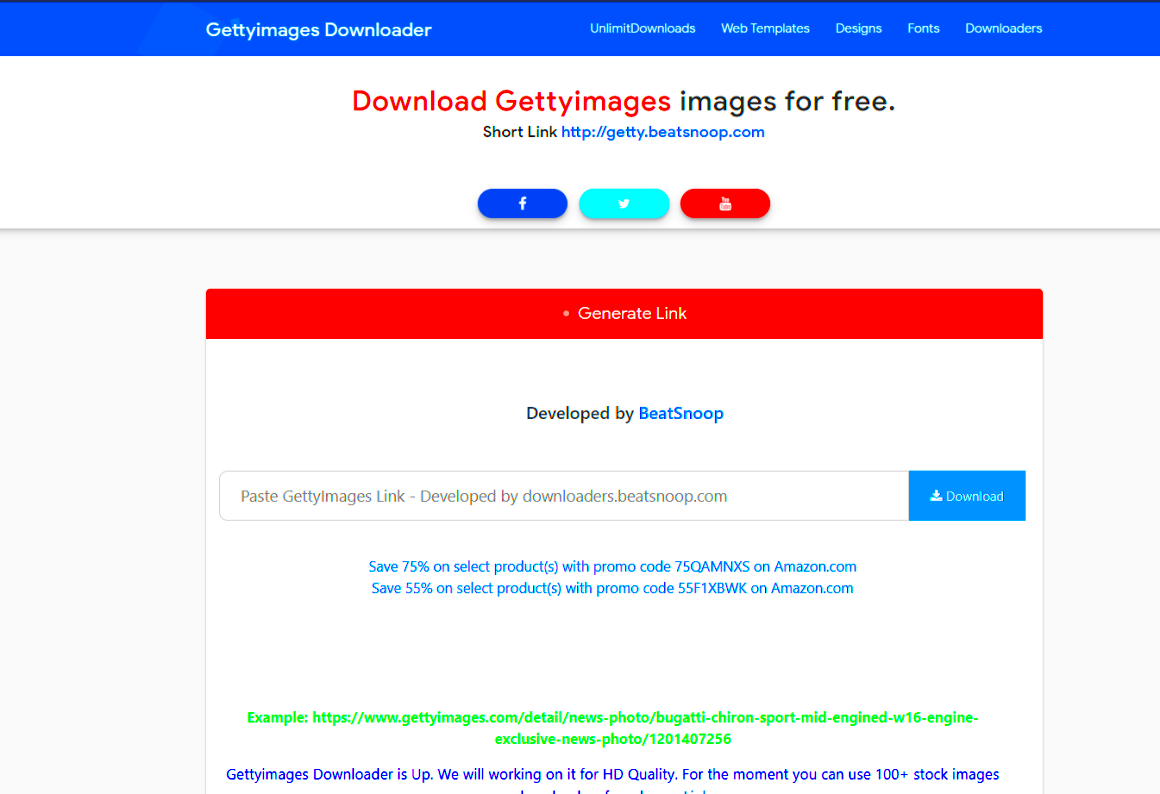Getty Images is like a goldmine of pictures and artwork that creative folks around the globe swear by. With its impressive range of images and illustrations
Getty Images has a rich collection that can add flair to any project. I’ve personally turned to
Understanding Getty Images Licensing

Understanding the intricacies of
Getty Images licensing system is essential when utilizing their services.
Getty Images provides a range of licensing choices, each designed to cater to specific requirements. Here’s an overview:
- Royalty-Free (RF): This allows you to pay once and use the image in multiple projects without additional costs. However, there are still restrictions on how you can use the image.
- Rights-Managed (RM): This type of license is more restrictive and often involves higher costs. Usage is limited to specific projects, and you may need to negotiate terms based on your needs.
- Editorial Use: These images are typically used for news and journalistic purposes. They cannot be used for commercial purposes and often include captions and credits.
Grasping the nuances of licenses can save you from issues down the line and make sure you use images in a way. I recall when I first started blogging struggling with these terms and coming to the realization that using images within the limits of their licenses was crucial. It goes beyond just following the rules; it's about honoring the creators and their contributions.
Free vs. Paid Getty Images
 Getty Images
Getty Images offers a mix of free and paid choices. Lets explore the key differences between the two.
| Aspect | Free Getty Images | Paid Getty Images |
|---|
| Cost | Free | Varies (typically based on usage and size) |
| Usage Rights | Often comes with limitations; not always suitable for commercial use | Broad rights, often includes commercial usage |
| Image Quality | Good quality, but selection may be limited | High-quality, extensive selection |
From what I’ve seen using
Getty Images can be a good option if you’re looking to save some money. They are suitable for projects or less prominent content. However if you have projects or business endeavors it’s worth considering purchasing images. The quality and range offered in paid selections often set the standard when it comes to producing polished and professional content.
How to Find Free Getty Images
Searching for
Getty Images can feel like a quest for hidden gems but with the right strategy it's totally doable. I recall when I was launching my business on a shoestring budget and pondering how to access top notch visuals without breaking the bank. Luckily
Getty Images has a few free offerings up its sleeve and let me share some tips on how to discover them:
- Search Filters: When you’re on Getty Images, use the search filters to narrow down your results. You can set the filter to show only free images. This will help you avoid sifting through paid content and save time.
- Check for Licensing Details: Even if an image appears free, always check the licensing details. Some images might be free for personal use but require payment for commercial use. Look for terms that specify “free for editorial use” if you need images for non-commercial purposes.
- Use Getty's Free Collection: Getty Images has a curated collection of free images that are available for use. Explore their ‘Free Images’ section to find high-quality visuals that you can use without cost.
Based on what I’ve seen using these filters and being diligent about licensing agreements has helped me avoid surprises and problems. It may require some additional work but it’s worth it to make sure you find the image that suits your requirements without overspending.
Downloading Getty Images Without Attribution
It may be appealing to download Getty Images without giving credit particularly if you want to make your content creation process more efficient. Nevertheless it’s crucial to handle this matter with caution. Here’s what you should keep in mind:
- Free Image Sources: Some images are available for free and don’t require attribution. Make sure you’re accessing these through Getty’s legitimate channels to avoid any copyright issues.
- Check the License Terms: Even if an image is free, the license terms will dictate whether attribution is necessary. Always read the terms carefully. Using an image without proper attribution when it’s required can lead to legal troubles.
- Download from Approved Sources: Download images directly from Getty’s website or authorized platforms. Avoid third-party sites that might offer Getty Images without proper licensing, as this could lead to compliance issues.
In my view relying on sources and verifying the licensing conditions has saved me from issues. Its wise to exercise caution and make sure you use images in line with their licensing rules. This not protects you legally but also shows support for the creators of the visuals.
Using Getty Images Legally
It’s crucial to use Getty Images in a way to steer clear of troubles and honor the rights of those who create images. Here’s a helpful guide to make sure you’re heading in the direction.
- Understand Licensing Terms: Familiarize yourself with the different licensing types—royalty-free, rights-managed, and editorial. Knowing what each type allows you to do will help you use images appropriately.
- Follow Usage Restrictions: Adhere to any restrictions mentioned in the license. This includes not using images for prohibited purposes or altering them in ways that are not allowed. For example, some images may not be used in commercial advertisements or altered beyond minor adjustments.
- Provide Attribution if Required: If the image requires attribution, make sure to give proper credit as specified in the license. This usually involves mentioning the image source and the photographer’s name.
- Check for Updates: Licenses and usage terms can change. Regularly check the terms to ensure you’re still compliant with Getty’s guidelines.
Looking back on my path sticking to these rules has been essential for upholding professionalism and steering clear of any potential issues. By honoring the agreements established by Getty Images you not safeguard yourself but also show respect for the talented creators behind these incredible visuals.
Common Issues and Solutions
Navigating Getty Images like any resource can present its fair share of hurdles. I recall when I first started running a blog grappling with the complexities of image rights and usage. As time went on I came across a few challenges and discovered some helpful remedies, along the way.
- Issue: Licensing Confusion – It’s easy to mix up the different types of licenses and their restrictions. To tackle this, always read the licensing terms carefully before downloading an image. If in doubt, don’t hesitate to contact Getty’s support for clarification.
- Issue: Attribution Requirements – Some images require attribution, but it’s easy to overlook these details. To avoid this, use tools or plugins that automatically include attribution in your content, or keep a checklist to ensure all requirements are met.
- Issue: Image Quality – Sometimes, free images might not meet your quality standards. In such cases, consider upgrading to paid options for higher resolution and better quality. A small investment can make a significant difference in the final output.
- Issue: Unauthorized Use – Using images without proper licensing can lead to legal trouble. Always download images through official Getty channels to ensure they are licensed correctly for your intended use.
In my opinion tackling these matters in advance has spared me from numerous troubles. Paying close attention to licensing agreements and making sure to use images in a way not only safeguards you but also honors the rights of the creators.
Best Practices for Using Getty Images
To make the most of Getty Images it’s not just about picking the perfect picture. It’s also about utilizing the resources wisely while adhering to legal and ethical standards. Here are some tips that have proven helpful for me:
- Choose Images That Align with Your Brand: Select visuals that resonate with your brand’s voice and message. For instance, if you run a travel blog, opt for images that evoke a sense of adventure and exploration.
- Optimize Image Resolution: Ensure you download the highest resolution possible for your needs. This is particularly important for print materials or large-scale digital displays. Lower resolution images might appear pixelated and unprofessional.
- Use Images Strategically: Place images in positions that enhance your content rather than just filling space. For example, use images to break up text and make it more engaging or to illustrate key points.
- Respect Licensing Terms: Always adhere to the licensing agreement associated with each image. If attribution is required, include it in a way that complies with Getty’s guidelines. Regularly review your use of images to ensure ongoing compliance.
- Keep Records: Maintain a record of the images you use, along with their licensing details. This can be useful if any issues arise or if you need to refer back to the terms later on.
By adopting these strategies, I have not enhanced the quality of my content but also ensured that I stay within the boundaries of the law. It’s crucial to use visuals in a way that respects the work of creators while adding value to your own.
FAQ
Q1: Can I use Getty Images for commercial purposes?
Absolutely, but it's crucial to make sure that you possess the correct license. Royalty free and rights managed licenses can accommodate usage however it's essential to review the specific terms associated with the image you select.
Q2: Are there free Getty Images available for personal use?
Indeed Getty Images provides a selection of free photos however it’s important to pay attention to the licensing conditions. Certain images may necessitate credit or be restricted solely for purposes.
Q3: What should I do if I can’t find a free image that suits my needs?
A3 Think about putting money into a stock photo. Paid images usually offer better quality and more versatility in how you can use them making it a good investment for projects that matter.
Q4: How can I ensure proper attribution for free images?
A4 Make sure to review the licensing conditions for every image. If you need to give credit do so in the format. You can use tools and plugins to streamline this process, if you regularly work with images.
Q5: What are the consequences of using Getty Images without proper licensing?
A5: Using pictures without the right permissions could result in problems like penalties or legal actions. It’s crucial to always adhere to the licensing agreements of images to steer clear of potential issues.
Conclusion
Leveraging Getty Images can significantly impact your projects whether you're working on a blog post, a marketing initiative or personal endeavors. Based on my experience the crucial aspect lies in navigating the platform with care and adhering to the licensing agreements. By grasping the distinctions between images, reviewing the licensing specifics and following best practices you can maximize the benefits of Getty Images while remaining compliant with legal regulations.It's essential to keep in mind that incorporating visuals not only enriches your content but also pays tribute to the artists behind these images. With an approach Getty Images can truly enhance your creations by offering visual attractiveness and professionalism to captivate your audience.
 Understanding the intricacies of Getty Images licensing system is essential when utilizing their services. Getty Images provides a range of licensing choices, each designed to cater to specific requirements. Here’s an overview:
Understanding the intricacies of Getty Images licensing system is essential when utilizing their services. Getty Images provides a range of licensing choices, each designed to cater to specific requirements. Here’s an overview: Getty Images offers a mix of free and paid choices. Lets explore the key differences between the two.
Getty Images offers a mix of free and paid choices. Lets explore the key differences between the two.
 admin
admin








